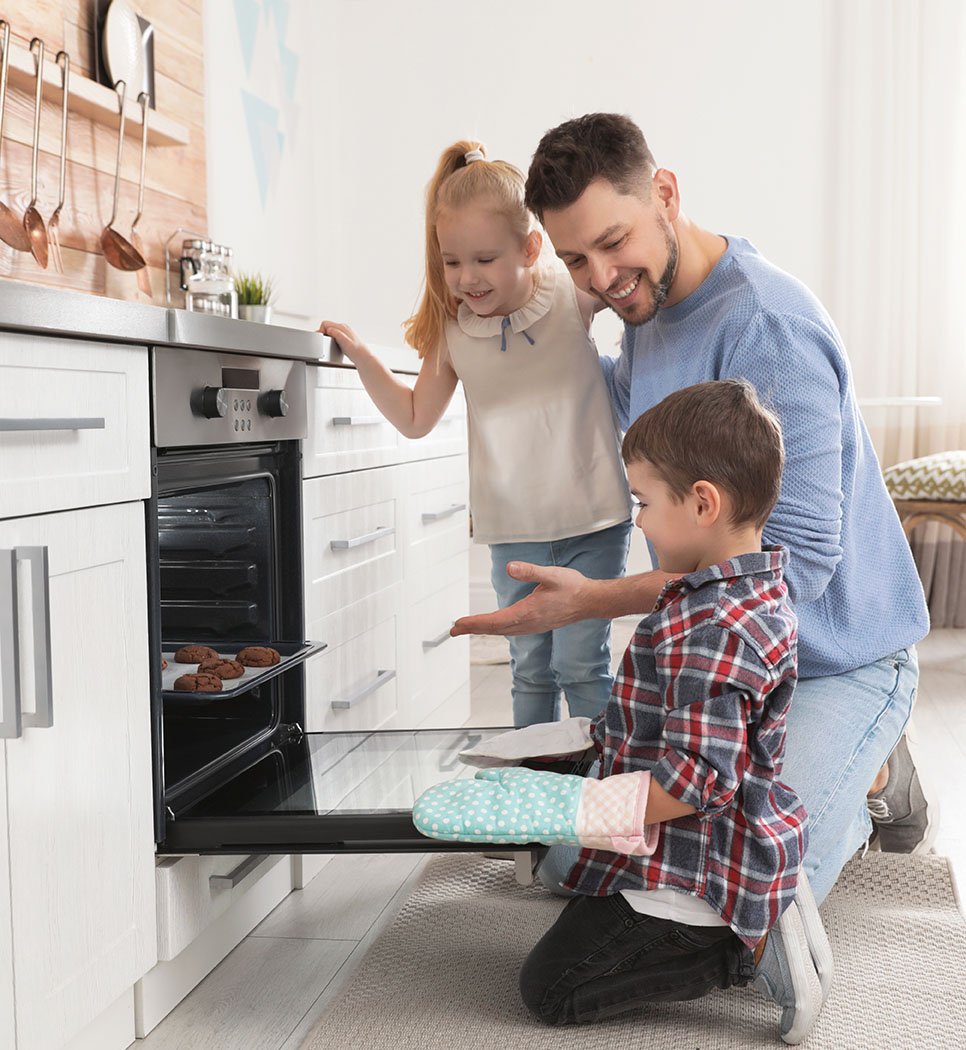During the holiday season, many of us can be found in the kitchen. It’s where we bake pies, decorate cookies and pass down precious family traditions. It’s also common for hot surfaces, electrical tools and boiling liquids around the kitchen to cause accidents and burns for adults and children alike. Here’s what you need to know about burn injuries.
What is a burn?
Burns are tissue damage from heat. There are various types of burns with different levels of severity. The most minor is a first-degree burn. A first-degree burn affects the outermost layer of your skin. It will be red, but not blistered.
A second-degree burn means the dermis – the layer beneath the outer layer of your skin – has been damaged. You’ll see blisters, and the burn will be painful to touch. Third-degree and fourth-degree burns damage deeper levels of skin and tissues underneath.
How to tell if a burn is serious
First-degree burns cause minimal skin damage. Because they only affect the first layer of skin, they generally heal quickly, within seven to 10 days, without leaving scars. The following symptoms are typical of first-degree burns:
- Pain
- Redness
- Minor inflammation and/or swelling
- Dry and peeling skin as the burn heals
If a first-degree burn covers more than a three-inch area or it is located on your face or a major joint – such as your shoulder, knee or ankle – it could be a more serious condition.
Tips for treating burns
You can treat most first-degree burns at home. The sooner you treat your burn, the quicker it will heal. There are many myths about the best ways to treat a burn. Grandma Sue's advice to put butter on it may cause more harm than good. It's best to consult with a medical professional to get the most helpful advice.
Here are some recommended treatments:
- Soak the burned area in cold water for at least five minutes.
- Take ibuprofen or acetaminophen to reduce the pain.
- Apply an anesthetic to the area, such as lidocaine, with aloe vera gel or cream to soothe the skin.
- Use an antibiotic ointment and cover the area lightly with loose gauze to keep it protected and out of the sun.
What to avoid:
- Do not put ice on a burn. That can make the burn worse.
- Do not use butter or eggs on the burn. They are not effective.
- Do not use cotton balls. The small fibers can stick to the burn and cause an infection.
Should you go to urgent care?
If you have any concerns about your burn, the team at any MultiCare Indigo Urgent Care can evaluate your minor burn and recommend treatment options to help with healing and pain relief.
However, if you experience any of the following symptoms, you should visit an emergency room:
- The burn appears to be getting worse
- The burn area is larger than the size of your hand
- You have blistering
- You can see muscle or bone
- You suffered a chemical or electrical burn
- The burn is located on a joint, your face, scalp or other thin-skinned area
Whether you’re the resident chef or crucial taste-tester this holiday season, Indigo Health is here for you when kitchen injuries happen … from minor burns to cuts that need stitches. We’re open 8 am to 8 pm every day, including holidays.
Book online or walk in and prevent burns from getting in the way of special holiday moments.


